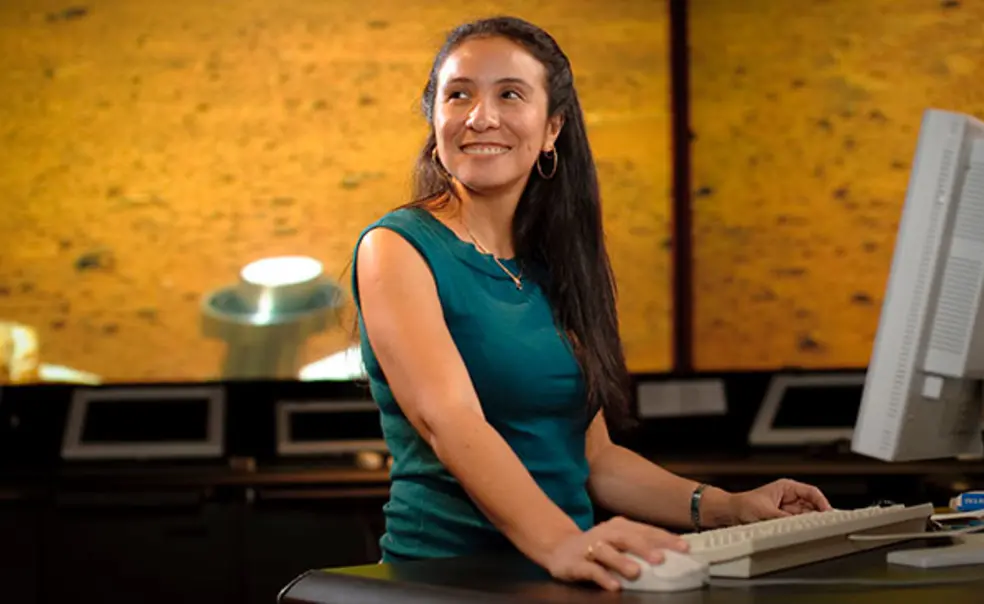Jessica Marquez ’99 Supports NASA Missions, Keeping the ‘User’ in Mind
As NASA’s spaceflight programs have come and gone, Jessica Marquez ’99’s interest in space has remained constant since her childhood in Peru. When she crossed the Western Hemisphere to attend Princeton, Marquez began a journey that landed her at NASA as a research scientist and engineer.
A U.S. citizen by birth, Marquez found the small-town culture of Princeton much different from her home country, but she turned the culture shock into an opportunity to help people learn. Attempting to educate the broader student population about Latino culture, Marquez helped found a group called OLA (Organización Latino Americana) and became involved in events like Latino Heritage Month. She also volunteered as a Spanish-English translator at a local hospital.
“Instead of like wallowing in sort of this shock, I said, ‘If other people don’t know about Latino culture, maybe I should try to show them and teach them through other events,’” she explained.
As an undergraduate, Marquez studied mechanical and aerospace engineering and interned at NASA, and she later earned her master’s degree and Ph.D. at MIT. Now, she works as a human systems engineer and human factors engineering researcher at the NASA Ames Research Center in Silicon Valley.
For most of her time at NASA, Marquez has developed planning and scheduling tools for spaceflight missions, like the Mars Rover and International Space Station (ISS).
“We design software so that they can plan out every activity that the rover is supposed to do,” she said. “Maybe a particular science instrument has to be used at a particular time or day, or at a particular temperature, or facing a particular direction. And all of those things sort of come into play.”
On the ISS, the challenge is similar. The solar-powered station rotates around the earth every 90 minutes, and astronauts need to make sure it stays powered, among many other science-related tasks. On top of their work to keep the station running, they also need to exercise two and a half hours each day. “We develop the tools to help them do that,” said Marquez.
Marquez is particularly attached to the International Space Station, which she called “an amazing program of international cooperation.” She views the advent of commercial spaceflight as a chance to send astronauts to the ISS from the United States again.
“It’s kind of like a forgotten sibling. It is an amazing engineering feat. It doesn’t have the flashiness of a launch, but it is a home and a laboratory in space,” she said.
For people in that home and on the ground, Marquez has always focused on improving the user experience. “I understand and can talk engineering, but my design goal is always to keep the user in mind,” she said.












No responses yet